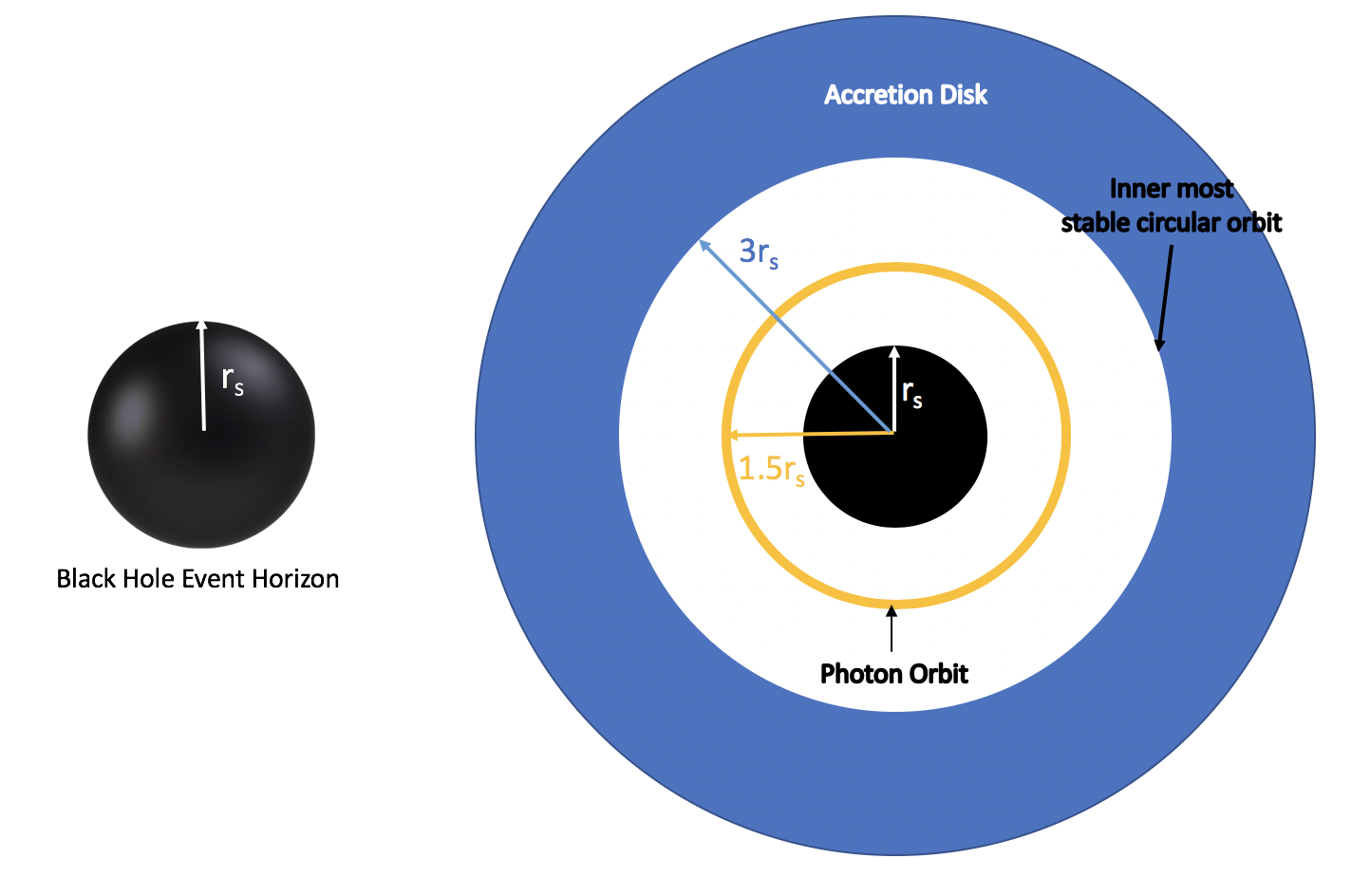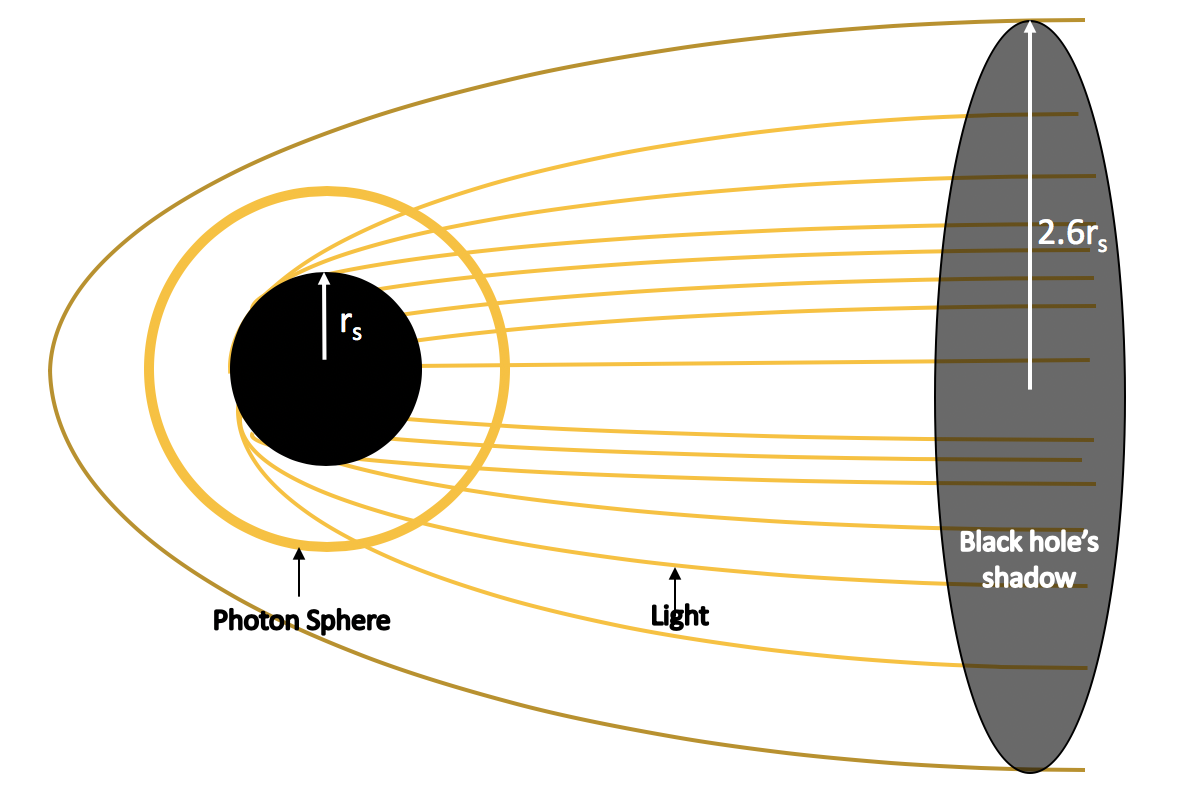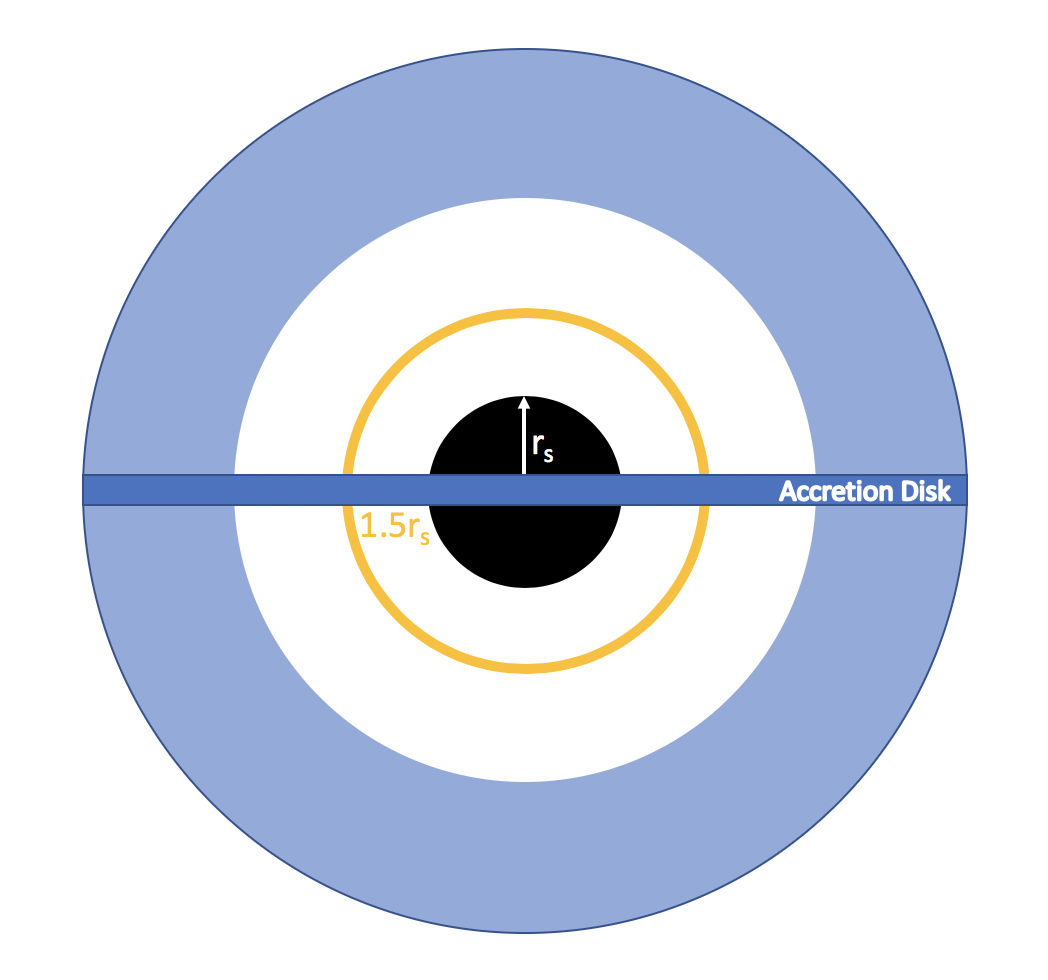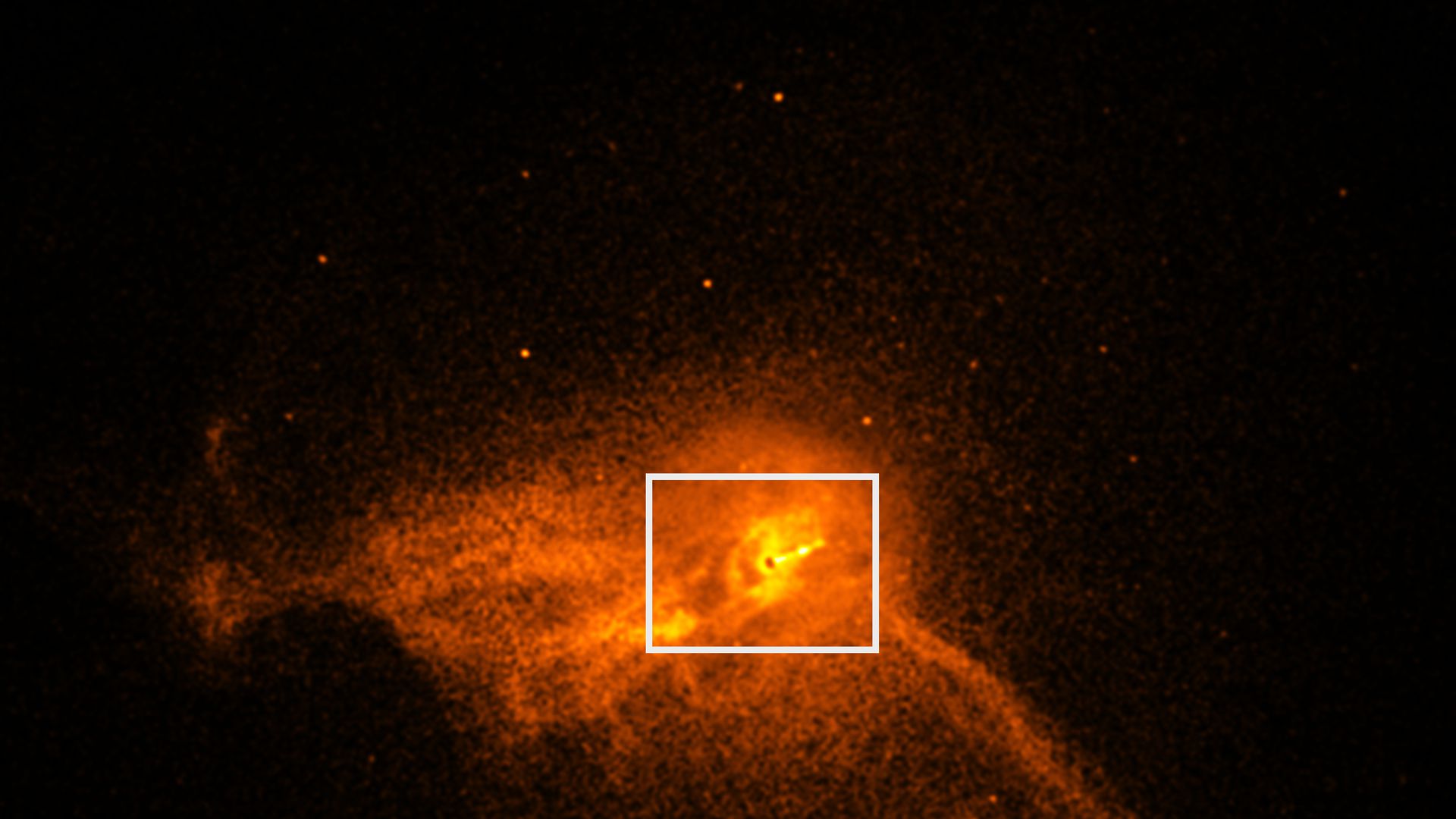The First Picture of a Black Hole!
The Event Horizon Telescope Team releases first image of a black hole
This morning I could not contain my excitement as I watched the National Science Foundation’s (NSF) live feed, where scientists were scheduled to deliver one of the biggest, most impressive news my generation might ever get to receive; the first image of a black hole. Today, the effort and coordination of a planet-scale array of eight ground-based radio telescopes has paid off. The Event Horizon Telescope (EHT) is said to be “an earth-sized telescope”, because, technically it is! The telescope, in essence, is the successful connection in a worldwide network of eight pre-existing telescopes deployed at a variety of challenging high-altitude sites including Hawaii, Mexico, Arizona, Spain, Chile and Antarctica.
While the EHT is putting effort behind capturing an image of the black hole at the center of our Milky Way galaxy, the picture released was that of the black hole at the heart of the distant galaxy, Messier 87. Messier 87’s much larger size and current location from our perspective in the universe made it’s black hole an easier to capture with our current tools.
 Figure 1: Image released at NSF conference by the EHT
team.
Figure 1: Image released at NSF conference by the EHT
team.
Why is this important?
Since the first mention of the big news released this Wednesday morning, astronomers began to ponder what our next steps would be if the first images revealed an unexpected shape of light bending around the black hole. The scientific community has long supported Einstein’s theory of General Relativity, which explains that the gravitational force created by an object of a given mass creates a “dip” in the fabric of space-time that in turn bends all things around it. If this were the case, and an object of sufficiently large mass were to exist, its gravity would be so great, that light itself could not escape it, and would be pulled in, creating an illusion “bending light” to an observer far, far away. This hypothetical object of large mass is what we call a black hole. The mass of a black hole, according to Einstein’s calculations would bend light such that it would appear to form a ring around the black hole’s event horizon.
A lot of astronomers and theoretical physicists are wise enough not to undermine Einstein’s conclusions, but the thought of it all being wrong did cross their minds, as stated in an amazing episode of The Planetary Radio. What if everything we thought we understood about space-time was wrong? Today’s picture puts a lot of these worries at ease.
What are we actually looking at?
To get a better understanding of what we are looking at, I will break down the concept of a black hole a little further. Imagine the center of the sphere shown in Figure 2 is our black hole. It is important to note that only the center point of the sphere represents the black hole (point of high mass), the rest of the black sphere/circle represents the event horizon. That is to say, the point at which not even light fired radially away from the black hole would be able to escape, or even less, be detected by an outside spectator (us!). The radius of the event horizon (our black circle) is called the Schwarzchild Radius (rs).
 Figure 2: Diagram of black hole, shows the event horizon in black
the accretion disk in blue, and the photon sphere in yellow. It is important to note, that while the blue is in fact a disk
the yellow and black circles are spheres, but are drawn here as 2D images.
Figure 2: Diagram of black hole, shows the event horizon in black
the accretion disk in blue, and the photon sphere in yellow. It is important to note, that while the blue is in fact a disk
the yellow and black circles are spheres, but are drawn here as 2D images.
To get a better understanding of what we are looking at, I will break down the concept of a black hole a little further. Imagine the center of the sphere shown in Figure 2 is our black hole. It is important to note that only the center point of the sphere represents the black hole (point of high mass), the rest of the black sphere/circle represents the event horizon. That is to say, the point at which not even light fired radially away from the black hole would be able to escape, or even less, be detected by an outside spectator (us!). The radius of the event horizon (our black circle) is called the Schwarzchild Radius (rs).
Now if we were to snap a picture of a black hole with nothing around it, we would not be able to see it because there would be no light for us to see. “Lucky” for us, the two black holes of interest to EHT are surrounded by matter. As you know, our solar system lies in the Milky Way galaxy, which at its center has a black hole which slowly feeds off the matter around it. Similar to ours, the Messier 87 galaxy of which the image was taken, also has matter around it. I have drawn the “accretion disk” this disk of matter around the black hole in blue in Figure 2. The accretion disk is where we live in our galaxy, made up of gases, starts and planets furiously orbiting the black hole in the center. Notice how the accretion disk is 3rs away from the event horizon; that is because at its closest border, the matter in the disk is stable in a none spinning black hole (For simplicity we will only be looking at none spinning black holes, even though our own is very much spinning).
Closer to the event horizon’s Schwarzchild Radius, light can orbit the black hole at about 1.5rs away from the singularity point. In Figure 2 I draw a yellow ring to represent that light orbit, or photon sphere. The photon spehere, is quite unstable around the black hole and thus presents light particles with a decision, they either stay or go. Meaning, photons around a black hole at about 1.5rs either end up being absorbed by the black hole, or escape the black hole before entering the event horizon.
Now that we know how all these components play a part in a black hole, we can answer the question: what exactly are we looking at? As predicted by Einstein’s General Theory of Relativity, the black hole will warp space time around it and change the path the light travels. So imagine we are shooting light rays at the black hole; if we were to shoot a light photon stream straight at the black hole, it would absorb the light and nothing would be seen again. Now imagine that instead the light stream graced the black hole at about the circumference of the photon orbit (1.5rs), that would still not be enough to escape the gravitational pull of the black hole, and the light ray would end up in the black hole. Well it turns out, the specific radius required for the light particles to not be pulled into the event horizon, is about 2.6rs, shown in Figure 3. Only at that radius will a light particle travel around the event horizon at approximately the radius of the photon orbit (yellow line) and then escape into infinity or make a U-turn and make it back to our telescopes (as shown by darker mustard yellow line). Now that light we will be able to see, and so we will really begin to “see” the black hole at about 2.6rs it’s actual event horizon radius (this is why they call it, the black hole’s shadow!).
 Figure 3: Shows the way light would behave as it passed
near the black hole’s event horizon. In order to escape the gravitational pull of a none spinning black hole, the light
would have to come in at about 2.6 rs. In that case, the light would bend as shown by the darker yellow line, and
we would be able to catch that light with our telescopes to generate the image EHT produced.
Figure 3: Shows the way light would behave as it passed
near the black hole’s event horizon. In order to escape the gravitational pull of a none spinning black hole, the light
would have to come in at about 2.6 rs. In that case, the light would bend as shown by the darker yellow line, and
we would be able to catch that light with our telescopes to generate the image EHT produced.
Now only ONE question remains! Why does the ring in the image look brighter on one side than on the other. This phenomena is due to something called “doppler beaming”, and it is caused by the fact, that we may not be looking at the black hole in the center of Messier 87 from a top down view, where we see the accretion disk (The blue disk with all the matter) as portrayed in Figure 2. If we are indeed looking at Messier from an angle in which the accretion disk lines up perpendicular to our point of view as shown in Figure 4, then it is the light of the back and front side of that accretion disk and all it’s stars that we see come around the black hole and into our telescopes. If the galaxy is rotating toward us, the light seems thicker and brighter while if it is going away from us, the ring looks dimmer and thinner.
 Figure 4: This is the Diagram shown in Figure 2, from
a different perspective. Rather than a top-down view, this is a view parallel to the accretion disk. In a case
like this we would be able to see the light reflect around the black hole coming from the matter and hot
gases in the accretions disk. If this were the case in our picture, it would look slightly more like
Interstellar’s CGI picture of a black hole!
Figure 4: This is the Diagram shown in Figure 2, from
a different perspective. Rather than a top-down view, this is a view parallel to the accretion disk. In a case
like this we would be able to see the light reflect around the black hole coming from the matter and hot
gases in the accretions disk. If this were the case in our picture, it would look slightly more like
Interstellar’s CGI picture of a black hole!
Looking at the image we can tell we are looking at Messier at an angle almost perpendicular to the accretion disk and from the images, scientists have concluded the plasmas around the black hole is rotating clockwise. From what we have learned we can conclude that the stars in the disk are traveling toward us in the bottom of the ring and away from us at it’s top. Today Einstein’s General Theory of Relativity has passed yet another crucial test, and it did so gracefully. The EHT team’s picture showed that the ring of light around the black hole’s shadow was indeed there, in all it’s circular light bending glory, just as mathematically predicted!
What’s cool about the picture itself?
The picture shown is just about 100 kilobytes but was processed from about 5PB worth of data (as a Big Data Scientist, I can tell you this is no joke). The image was taken electromagnetic waves with radio waves because they can show us features close into event horizon, and pass through the accretion disk. The $29 million dollar picture, is truly remarkable and a landmark to human kind’s history.
I’m glad I got to see this moment, and I am excited to be part of a generation that will get to answer questions never answered before. You should get excited too! You just saw a black hole, a real one, something similar to what the center of our galaxy looks like. Every day we live our lives slowly approaching this massive point in the center of our galaxy, today we finally see what that looks like. I only wish Dr. Stephen Hawking had been here to see it.
 Figure 5: A close-up of the core of the M87 galaxy
with a black hole in its center. Photo Credit: NASA/CXC/Villanova University/J. Neilsen
Figure 5: A close-up of the core of the M87 galaxy
with a black hole in its center. Photo Credit: NASA/CXC/Villanova University/J. Neilsen


Comments